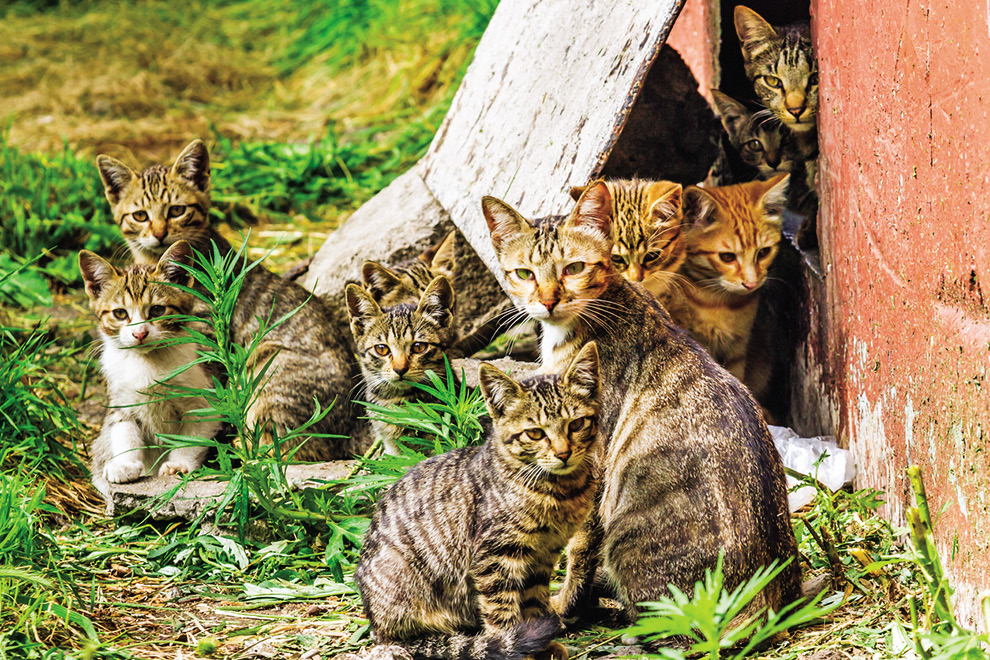A new mathematical model of cat populations in the United Kingdom suggests that neutering cats that belong to people not only affects the population dynamics of these owned cats, but also affects feral, stray, and shelter subpopulations. The researchers found that neutering pet cats at a younger age can help control population growth of all cats.
More than 10 million cats live as pet pets in U.K. homes, and hundreds of thousands of additional cats live in shelters or as free-roaming feral or stray cats. Cats may transition from any of these subpopulations to another. However, while many prior studies have investigated cat population dynamics, few have accounted for the connectivity between subpopulations, limiting understanding of how certain factors, such as neutering, within a specific subpopulation might also affect other subpopulations.
To help address that gap, researchers developed a mathematical model of cat population dynamics in the U.K. that includes all four subpopulations. It draws on real-world data to set parameters relating to several different factors, such as survival rates, fertility rates, seasonal breeding patterns, and rates of transitions between subpopulations. The researchers then used the model to simulate how neutering female cats, as well as changes in other factors, might affect cat population dynamics.
In the simulations, neutering of female pet cats significantly influenced all subpopulations. Lower rates of neutering of female pet cats led to population booms within the other subpopulations, especially for stray cats. The simulations also showed that even if neutering rates remain the same neutering female pet cats at a younger age could decrease population growth rates for all subpopulations.
The factors with the greatest influence on overall cat population growth rate were survival and fertility rates of owned cats. Among the subpopulations, stray cats had the second-highest influence, followed by feral cats, and shelter cats had the least influence.
These findings underscore the importance of considering the interlinked nature of cat subpopulations and could help inform population management efforts. The researchers note that the availability of additional real-world cat data would help improve the accuracy of their model. “We previously had little robust understanding of just how important the links between cat subpopulations are. Our study shows that connectivity between cat subpopulations can have a big influence on population dynamics,” say the study authors. “Our scenarios demonstrate a mechanism by which owned-cat neutering practices can profoundly influence the dynamics of all cat subpopulations. By using owned-cat neutering as our example interventions, this study highlights more generally the importance of understanding and modeling the links between domestic cat subpopulations, to improve the accuracy of modeled outcomes and better inform management strategies.”ν
McDonald, J., et al. “Cat: Empirical modelling of Felis catus population dynamics in the UK.” PLOS ONE, 2023; 18 (7): e0287841. Science Daily.




